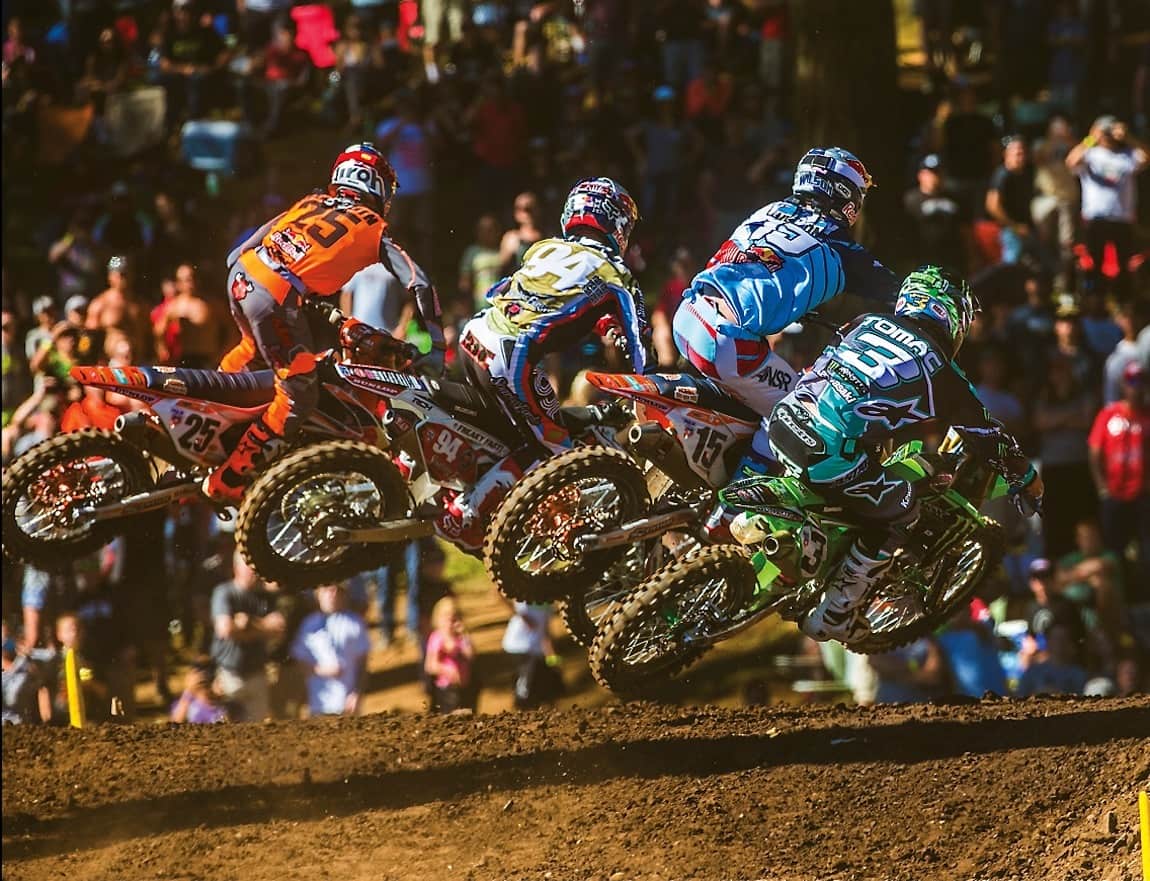TEN THINGS YOU NEED TO KNOW ABOUT CARRYING MOMENTUM
(1) Momentum. The amount of momentum you carry around a track determines just how good a rider you are. The difference between you and an AMA Pro is not top speed but overall speed. If you watch closely, you will be surprised by just how little Pro riders use their brakes. They don’t want to hinder their momentum.
(2) MotoGP. MotoGP road racers are the kings of momentum. They use every square inch of the course. From the outside to the inside and from the inside to outside, they maximize their traction and power capacity to sling themselves around the track. MotoGP riders plan ahead. They know where they are going before the race even starts. In turn one, they put themselves in the best position to make the most of turn two. They don’t just blast around the course and make it up as they go. They think it through.
(3) Slow down. We know that “slow down” is not what you want to hear. It is hard for any of us to swallow our pride and slow the pace down, but it’s often better to be patient than foolhardy. It might be true that if you brake late and come up the inside you will be faster to the turn, but if you went a little wider and set up to sweep through the same turn, you might be 10 miles per hour faster up the next straight. Slowing down allows you to focus on the goal at hand. Tracks don’t have to have “flow,” but good riders do.
(4) No brakes. No brakes may sound like a recipe for disaster, but brakes are the enemy of momentum. Think about it. There is no difference in the speed that a Vet Intermediate and Ryan Villopoto can generate down a long straight. They can both go wide open. So, where does Ryan pull away. He doesn’t brake as much for the corner. He rolls the throttle on sooner on the exit. He brakes less, and thus he slows down less. You can easily practice not using the brakes by taking baby steps. Then, as you find places to use the brakes less, you can start to speed up the pace. Progress slowly.
(5) Displacement. Many people tend to like the bigger-displacement bikes for one simple reason: the power is there when you need it. This tends to make them lazy riders. If you have access to a two-stroke or smaller-displacement four-stroke to practice on, you will see that your race pace on your 450 is more like trail riding than racing. If you have a chance to ride a 125 two-stroke, take it, because that is the ultimate momentum bike. A couple laps on a 125 will make you a better 450 rider.
(6) Traction. In most cases, any time the front or rear end of the bike breaks loose, you lose momentum. Losing traction can be caused by lack of throttle control, aggressive braking, incorrect body position or the wrong tires for the terrain. You have to make the rubber stick to the ground if you want to flow around corners at speed.
(7) Throttle control. MXA test riders don’t display good throttle control in their test photos. The best photos come from dumping the clutch, holding the throttle wide open and moving as much earth as possible. But when we race, we change our style. Being smooth and consistent with the throttle through corners doesn’t make for good photos, but it keeps the rear end tracking with the front.
(8) Lines. The shortest route is the fastest route—if you are going to point B. But motocross isn’t about going from point A to point B; it’s about going from A to B to C to D and back to A again. The only time to maximize your A-to-B speed over your A-to-C speed is when going up the inside to make a pass. If you are chasing, use the fastest line around the track, not just the fastest line to the next turn.
(9) Rear brake. When you set up for a corner and begin to sit down, make it a habit to get off your rear brake. This will ensure that you get all your braking done early. Yes, other riders might catch up to you coming into the corner, but you will pull away from them through the exit as you will carry more speed. The rear brake is hard to use when sitting down through braking bumps—and often a bump will cause a rider to stomp on the pedal instead of just pressing it. Being off the rear brake through the corners will aid in keeping the bike on the intended line.
(10) Extra gear. Too many riders downshift for corners that could be negotiated in a taller gear. If you can do a second-gear corner in third, you will be much faster up the next straight than if you downshift and then shift back up to third. At first you may feel compelled to use the clutch to keep the rpm up, but with practice you will find that many second-gear corners are really third-gear corners.









Comments are closed.